Blocked drains are a common and annoying problem that affects any home or business. Water can overflow or emit unpleasant odours in this issue. And pipes, fixtures, and appliances that create health and safety hazards may also become damaged. There are many possible causes of this problem, but some are more common than the rest. So, we are going to explore some of the most common types of blocked drains. And we will discuss how to identify, prevent, and clear them using natural or alternative methods.
Hair Clogs
One of the most common types of blocked drains is hair clogs. These are especially prevalent in bathroom sinks, showers, and bathtubs. Hair can fall off or get washed away during grooming or bathing. Which will accumulate over time and form a tangled mass. Eventually, it traps other debris and reduces water flow. Then, bacteria and mould will also occur, which can cause bad smells and health problems.
Symptoms
If you have a hair clog in your drain, you may notice some of the following symptoms:
- The water drains slowly or does not drain at all in the sink, shower, or tub.
- You hear gurgling noises from the drain as the water tries to pass through the clog.
- You smell foul odours from the drain that may indicate rotting hair or organic matter.
- You see hair or clumps of hair in the drain or on the drain stopper.
Prevention
To prevent hair clogs from forming in your drain, you can take the following steps:
- A drain strainer or guard helps catch hair before it goes down the drain. You can find these devices in most hardware or plumbing stores.
- Clean the drain stopper regularly to remove any hair or soap scum. Use a toothbrush, for instance, or a cloth to scrub it gently.
- Comb or brush your hair before showering or washing it to remove loose strands that may fall off during the process. You can also tie your hair up or wear a shower cap.
- Dispose of hair clippings in the trash instead of flushing them down the toilet. Hair can clog your toilet as well as your sink.
Grease Clogs
Another common type of blocked drain is a grease clog. These are especially common in kitchen sink plumbing. Cooking oil, butter, cheese, sauces, and other food products are the reasons for it. Grease in the drain solidifies and sticks to the walls of the pipes, narrowing the passage and trapping other food particles. Pests and rodents will also be attracted due to this, which can chew on your pipes and cause leaks.
Symptoms
If you have a grease clog in your drain, you may notice the following symptoms:
- The water drains slowly or does not drain at all in the sink.
- You see bubbles or froth from the drain as air escapes from the clog.
- You smell foul odours from the drain that may indicate rancid grease or decomposing food.
- You notice greasy or oily residue in the sink or on the dishes.
Prevention
To prevent grease clogs from forming in your drain, you can take some of the following steps:
- Avoid pouring grease or oil down the drain. These substances do not mix with water and can harden when they cool down. Instead, pour them into a container, dispose of them in the trash, or recycle them if possible.
- Wipe off greasy dishes with paper towels before washing them. So less grease will go down the drain. Use a scraper or a spatula to remove any solid food waste from the dishes.
- A grease trap or interceptor collects grease before it reaches the drain. These devices separate grease from water and store it in a container.
- Pour hot water and dish soap down the drain once a week to dissolve any grease buildup. You can also add some salt or baking soda to increase the effectiveness.
Soap Scum Clogs
Another common type of blocked drain is a soap scum clog. These clogs are especially common in bathroom sinks and bathtubs. Soap scum is formed when soap reacts with hard water minerals. And then you can coat the pipe walls and reduce water flow. It can also combine with dirt, skin cells, and other debris to form a hard crust.
Symptoms
If you have a soap scum clog in your drain, you may notice the following symptoms:
- The water drains slowly or does not drain at all in the sink, shower, or tub.
- You see the white or grey film on the drain or the fixtures. This is soap scum residue that has dried up.
- You experience reduced water pressure or flow from the faucet or showerhead. This is because soap scum can clog up the aerators or nozzles that regulate water flow.
- You get cloudy or milky water from the tap. This is because soap scum can interfere with water quality.
Prevention
To prevent soap scum clogs from forming in your drain, you can take some of the following steps:
- Use liquid soap instead of bar soap. Liquid soap contains less fat and more water than bar soap, which makes it less likely to react with hard water minerals and form soap scum.
- Install a water softener or filter to reduce hard water minerals. Hard water minerals can cause soap scum buildup as well as other problems, such as scale deposits, corrosion, and staining. A water softener or filter can remove these minerals from your water supply and improve its quality.
- Clean your pipes regularly with vinegar or citric acid to dissolve soap scum buildup. Vinegar and citric acid are natural acids that can break down soap scum and other mineral deposits in your pipes. You can pour some vinegar or citric acid down your drain once a month and let it sit for an hour before flushing it with hot water.
- Rinse your sink, shower, or tub thoroughly after each use. This will help wash away any soap scum residue that may be left behind on the surface.
Food Waste Clogs
Another common type of blocked drain is food waste clogs. Food waste clogs are especially common in kitchen sinks with garbage disposals. Garbage disposals are devices that grind up food waste into small pieces that can pass through the pipes. However, not all types of food are suitable for disposal, such as fibrous, starchy, or hard items. These items can get stuck in the blades or the pipes of the disposal, causing jams or blockages. Food waste can also rot and produce unpleasant smells and gases.
Symptoms
If you have a food waste clog in your drain, you may notice the following symptoms:
- The water drains slowly or does not drain at all in the sink.
- You hear humming or grinding noises from the disposal as it tries to work.
- You smell foul odours from the drain that may indicate spoiled food or sewer gas.
- You see food particles or chunks in the drain or on the disposal.
Prevention
To prevent food waste clogs from forming in your drain, you can take some of the following steps:
- Avoid putting certain types of food on the disposal, such as fibrous, starchy, or hard items. Examples of these items are celery, corn husks, potato peels, egg shells, bones, nuts, and seeds. These items can jam or damage the disposal blades or pipes.
- Run cold water while using the disposal to help flush away the food waste. Cold water will also help solidify any grease or oil that may be in the food waste and prevent it from sticking to the pipes.
- Clean the disposal regularly with ice cubes, lemon peels, baking soda, and vinegar to remove any residue or odour. Ice cubes will help sharpen the blades and dislodge any stuck food particles. Lemon peels will help deodorise and sanitise the disposal. Baking soda and vinegar will help dissolve any grease or scum buildup.
- Dispose of food waste in the trash or compost instead of the sink whenever possible. This will reduce the amount of food waste that goes down your drain and prevent clogs.
Also Read: Drain Blockages Early Warning Indications
Tree Root Clogs
Tree root clogs are especially common in outdoor drains or sewer lines. These roots can grow into cracks or joints in the pipes, seeking water and nutrients. And then block the pipes completely or partially, causing backups or overflows. As a result, pipes get damaged, leading to leaks or bursts.
Symptoms
If you have a tree root clog in your drain, you may notice the following symptoms:
- The water drains slowly or does not drain at all in sinks, showers, tubs, or toilets.
- You hear gurgling noises from drains or toilets as air escapes from the clog.
- You smell sewage from drains or toilets as wastewater backs up into your home.
- You see wet spots or sinkholes in your yard as water leaks from the pipes.
Prevention
To prevent tree root clogs from forming in your drain, you can take some of the following steps:
- Avoid planting trees near your pipes or sewer line. Trees can extend their roots far beyond their canopy. So, you should leave enough space between them and your pipes or sewer line.
- Choose trees with noninvasive root systems. Some trees have more aggressive or expansive root systems than others. Which can pose a greater threat to your pipes or sewer line.
- Install root barriers or shields around your pipes or sewer line. These are physical or chemical devices to prevent roots from growing. You can find these devices in some plumbing stores or online.
- Cracks or leaks in your pipes can attract tree roots by providing them with water and nutrients. You can use a camera inspection service to check your pipes for any signs of damage or intrusion.
Alternative Solutions
If you still have a clog in your drain, you can try some of the following alternative solutions to clear it: These are the most common methods and mostly work for any kind of method:
- Using a plunger to make suction and dislodging the clog completely. Fill the area with enough water to cover the drain opening. Place the plunger over the drain, and push and pull it vigorously several times. You may hear a popping sound when the clog is released.
- A wire hanger or a drain snake will do the work; just hook and pull out the clog. Bend one end into a small hook by straightening a wire hanger. Insert the hook into the drain and twist it around to catch the hair. Then, pull it out slowly and repeat until you clear the clog. Or use a drain snake, a long, flexible tool with a claw or a spiral tip that can reach deeper into the pipes.
- Baking soda and vinegar create a fizzing reaction and eventually break up the clog. So pour half a cup of baking soda down the drain, followed by half a cup of vinegar. Wait for 15 minutes while the mixture bubbles and dissolves the hair. Flush with hot water to wash away the residue.
- Use hot water or steam to melt and flush away the clog. Boil some water in a kettle or pot and pour it down the drain slowly and carefully. A steam cleaner will also be helpful to blast hot steam into the drain. The heat will help loosen and melt the hair and other debris.
Conclusion
Blocked drains are a common problem that can cause inconvenience and pose health risks. There are many types of blocked drains. And each issue comes with different causes, symptoms, and prevention methods. That’s why we have provided some simple tips using natural methods. And you can clear your drains without using harsh chemicals or calling a plumber. Yet, you should seek professional help as soon as possible if you have a severe clog that you cannot clear yourself.

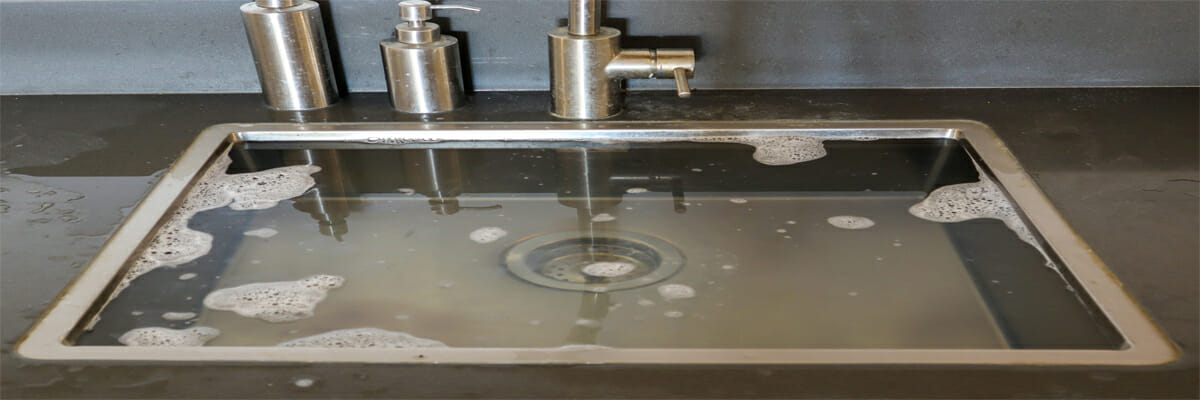
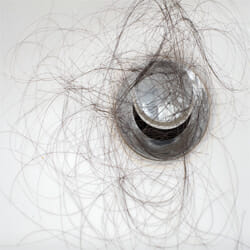
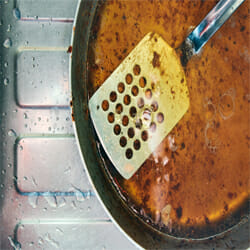
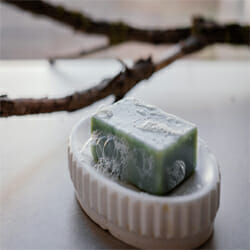
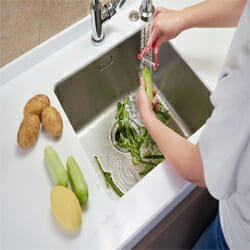
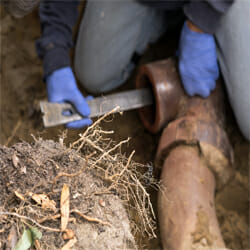
 Enquire
Enquire